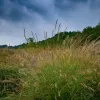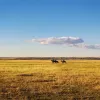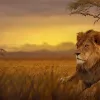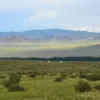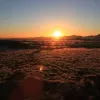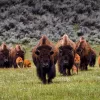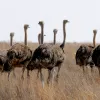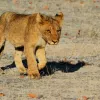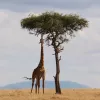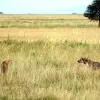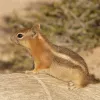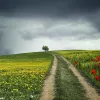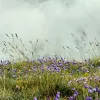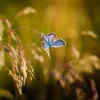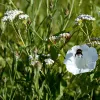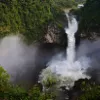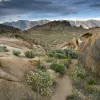Important update from TheSchoolRun
For the past 13 years, TheSchoolRun has been run by a small team of mums working from home, dedicated to providing quality educational resources to primary school parents. Unfortunately, rising supplier costs and falling revenue have made it impossible for us to continue operating, and we’ve had to make the difficult decision to close. The good news: We’ve arranged for another educational provider to take over many of our resources. These will be hosted on a new portal, where the content will be updated and expanded to support your child’s learning.
What this means for subscribers:
- Your subscription is still active, and for now, you can keep using the website as normal — just log in with your usual details to access all our articles and resources*.
- In a few months, all resources will move to the new portal. You’ll continue to have access there until your subscription ends. We’ll send you full details nearer the time.
- As a thank you for your support, we’ll also be sending you 16 primary school eBooks (worth £108.84) to download and keep.
A few changes to be aware of:
- The Learning Journey weekly email has ended, but your child’s plan will still be updated on your dashboard each Monday. Just log in to see the recommended worksheets.
- The 11+ weekly emails have now ended. We sent you all the remaining emails in the series at the end of March — please check your inbox (and spam folder) if you haven’t seen them. You can also follow the full programme here: 11+ Learning Journey.
If you have any questions, please contact us at [email protected]. Thank you for being part of our journey it’s been a privilege to support your family’s learning.
*If you need to reset your password, it will still work as usual. Please check your spam folder if the reset email doesn’t appear in your inbox.
Grassland habitats
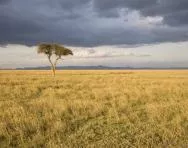
What are grassland habitats?
Grassland habitats have mostly… well… grass! You won’t find lots of trees in grasslands, and they get more rain than deserts but not as much as woodlands.
Grassland habitats can be found in many places around the world, and in a variety of climates. They are sometimes called other names, such as prairies, savannahs, steppes or pampas, depending on where in the world they are and the sort of climate there. Animals have adapted to the fact that grasslands don’t have many places to hide from predators by making homes in the ground, or by being tall enough to see over high grasses and shrubs.
Top 10 facts
- Grassland habitats can be found on more than 40% of the land on Earth. They are wide, open areas where mostly grass and flowers grow.
- Grassland habitats are very common, and there are many different kinds depending on the sort of climate they’re found in.
- Two main kinds of grasslands are tropical and temperate. Tropical grasslands are warmer than temperate grasslands.
- Tropical grasslands are located between the near the equator, and they stay pretty hot all year long. Savannahs in Africa are tropical grasslands.
- Temperate grasslands are located further away from the equator in both the northern and southern hemispheres. They can get very cold in the winter.
- Grasslands can be good for growing crops and feeding livestock, so many grasslands have been used for farming. This means that grassland animals can’t live there anymore, though.
- Grassland habitats get enough rain for grass to grow and cover the ground, but they don’t have the right rain and other conditions for trees to grow.
- The grass found in grassland habitats can be different lengths depending on exactly how much rainfall there is. For instance, tall grass will grow where there’s a lot of heat and moisture. In grasslands where it can be colder and drier, the grass will be short.
- A huge variety of animals and insects live in grassland habitats. They range from creepy crawlies deep in the soil, to reptiles, birds, and small and large mammals above ground.
- There are many different kinds of grassland habitats in the UK. Do you know where one is near where you live?


Start your child on a tailored learning plan
- Maths & English resources added to your plan each week
- Follows the National Curriculum
- Watch your child leap ahead in their learning & confidence
Did you know?
Grasslands take up over 40% of the land on Earth’s surface.
Grasslands really do have a lot of grass! There is enough rainfall for grass to grow, but not for lots of trees – so, grassland is a large, open space.
The baobab tree grows in the African savannah. In the rainy season it stores water (up to 120,000 litres!) in a huge, swollen trunk, and that allows it to survive the dry season and months of drought when no rain falls.
Some of the largest land animals in the world live in grassland habitats, like elephants, bison and ostriches – the largest bird in the world.
American prairie dogs, who live on grassland in north America, make their homes in huge underground colonies called towns. It is estimated that a prairie dog town found in 1900 was home to an incredible 400 million prairie dogs!
There are many different kinds of grassland habitats right here in the UK! These include:
- limestone grasslands (can be found in the Cotswolds, Peak District, Yorkshire, Wiltshire)
- marshy grasslands (can be found in Devon, Cornwall and Wales)
- acid grasslands (can be found in the New Forest)
- lowland meadows and pastures (can be found in Hereford, Worcestershire, Somerset, Dorset, East Anglia and the Weald)
- upland hay meadows (can be found in the North Pennines, Yorkshire Dales and Cumbria)
- calaminarian grasslands (can be found in the North Pennines, Yorkshire Dales, the Mendips, Derbyshire and Cornwall)
Because there aren’t a lot of trees, there aren’t many places for animals to hide from predators. So, some have adapted to the habitat by making homes underground. Meerkats do this, but they’re a little mean about it – they take burrows that other animals have made and fix them up for themselves.
Grassland habitat gallery:
- Pampas
- Prairie
- Savannah
- Steppes
- Veld
- Bison
- Ostrich
- Lion
- Giraffe
- Hyena (and cheetah!)
- Ground squirrel
- A meadow
- Butterfly
- Bee gathering pollen
Gallery
About
In regions that are too dry for trees to grow close together in large numbers, grass dominates the landscape. Grass is a very tough plant and it grows in huge abundance, so large herds of animals can find enough of it to it (just one bison in north America can eat up to 15kg of grass a day!).
Temperate grasslands are often found in the middle of continents. In the United States of America the grassland is called prairie and in central Asia it is known as steppe.
Tropical grassland is in hot climates which have wet and dry seasons and is known as savannah or savanna.
Because grasslands are so wide open, they offer a good-sized area for animals to travel in large packs called herds. Zebras, wildebeests, kangaroo and bison all travel in herds.
The soil in grasslands is very rich with nutrients and good for growing crops. So, grasslands are used for farming. It’s important to balance how much grassland is turned into farms, because it changes the habitat that grassland animals can live in.
Plants found in grassland habitats include:
- grasses, long and short
- sunflowers
- goldenrod
- clover
- wildflowers
- cottonwood trees
- acacia trees
- baobab trees
Animals and insects that live in grassland habitats include:
- Bees
- Bison (also called buffalo)
- Butterflies
- Elephants
- Giraffes
- Greater rhea
- Ground squirrels
- Hyenas
- Lions
- Maned wolves
- Meerkats
- Mongoose
- Monkeys
- Prairie dogs
- Ostriches
- Termites
- Zebras
Words to know for grassland habitats:
Prairie – a temperate grassland (and a kind of steppe) usually found in North America; herds of bison live on the prairie
Savannah – a type of tropical grassland that might get all its rainfall in one season (summer or winter); the grasslands of Africa are mostly savannahs, where lions, zebras, elephants and giraffes live
Steppe – a temperate or tropical grassland that only has trees near lakes and rivers; located in places including southern Russia, central Asia, southern South America, the central United States and western Canada
Veld – a term used to describe the grasslands in southern Africa; the Veld has nature reserves where cheetahs, lions, antelopes and hippopotami live
Pampas – grasslands in South America that include Uruguay and parts of Brazil and Argentina; the maned wolf and greater rhea live in the Pampas
Related Videos
Just for fun...
Can you tell what kind of creatures live in the African savannah?
Make your own paper savannah diorama and grassy plain diorama
Try the BBC's Food chains challenge: Savannah
The prairie is one of North America's great ecosystems. Can you restore one digitally with the Build-A-Prairie game?
Habitat colouring in, including grassland scenes
Show off your grasslands knowledge with a CBBC grasslands quiz
Best books about grassland habitats for children
Find out more about grassland habitats
Look at an annotated cross-section of the African savannah
The World Wildlife Fund overview of grassland habitats
World biomes: savannahs
Information about North American prairies and steppes
Find out about the animals and plants of the savannah and the prairie and steppe
Information to help you explore a meadow in the UK
See for yourself
On Africam you can watch free live video streams of the African savannah and its wildlife: elephants, zebras, giraffes and more
Look through a photogallery of grassland habitats from the BBC
Download a grassland spotting kit and go on a learning walk in your closest meadow
